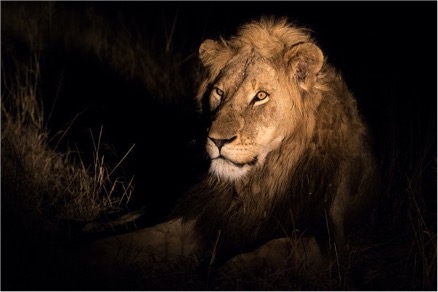January 2021
The rise of the Styx and Nkuhuma male lions
Share:
The rise of the Styx and Nkuhuma male lions

The Styx male lion
One thing that intrigues most guides, and a topic that absolutely fascinates me, is the ever-changing lion dynamics within the Sabi Sand Wildtuin. I remember visiting the reserve for the first time as a young child back in 2000 and being introduced to the various prides and male coalitions that were in the area at the time. I was blown away and couldn’t wait for every subsequent annual family trip so that I could sit and chat to the guides and find out what had happened with the lions in the year before. As the years rolled on and technology improved, social media made it easier to keep up to date with the lion population of the Sabi Sand. Fast forward almost 21 years and I now find myself in the fortunate position where I’m able to witness these animals living out their natural lives on a daily basis.
Two lions that are certainly peeking everyone’s interest is the coalition consisting of the Styx and Nkuhuma male lions. These males, born in 2016, are now approaching five years in age and looking at previous coalitions and their successful takeovers, five years seems to be the age where males have built up the strength and confidence to lay down a challenge and take claim of territory and, with it, associated prides. With that in mind, these males are then approaching that stage in their lives in which they will start seeking out females and attempt to drive out existing dominant male lions. These males, like all young nomadic male lions, have kept a low profile, steering well clear of the already established coalitions that surround Singita. Concentrating most of their movements between the Sand River and the central parts of Singita, this somewhat vacant patch of land will do them good in allowing them to get a lay of the land. This will also help them determine what potential competition they will one day face through the surrounding territorial roars.
Should these males be intent on staying in this area, they would need to oust at least one of four male coalitions. The already established males consist of the three Tumbela males to the west, the Othawa male to the south, the two Birmingham males to the far east and the three Avoca males to the north and east. The Tumbela coalition, being only a year older have the advantage of numbers with one extra coalition member. Coalition numbers is probably the true strength for any coalition and owes to the dominance success of the coalition. The two young males made a brief appearance in the west recently and were swiftly pushed back east by the Tumbela males and so the west is probably out of question for them.
Northern Singita has seen an increased amount of appearances from the Avoca males in recent times and being three adult males in their prime, it almost immediately rules out this area for any attempted takeover.

One of the Avoca male lions
Looking east and the two Birmingham males still rule over a large tract of land. These males, now around 10 years in age are still a force to be reckoned with and any takeover attempt in this area would almost certainly require the Styx and Nkuhuma males isolating one of the Birmingham males. It does, however, appear that the Avoca coalition are pushing further south into what is Birmingham territory so again this is probably an area ruled out for the two young males.
What’s left and could be a viable option is central and southern Singita which is under the Othawa male lion’s rule. The Othawa male, now at six years of age and in his prime, is probably one of the largest and most impressive male lions I have seen in recent years. Unfortunately for him though he is a male lion on his own and this will make it extremely difficult for him to defend himself and his territory from a coalition of two. It has happened before in the past where single male lions have fended off coalitions and the Othawa male may be able to do just that, but it will be no easy task. This would, in my opinion, probably be the Styx and Nkuhuma males’ best chance of taking over territory and with it the Mhangene Pride.

Othawa male lion
For the time being, they seem to be content within the area we are finding them in, taking advantage of the bountiful prey species on offer. Having killed three giraffes over the last month, these males are providing for excellent viewing and are certainly a coalition to watch in the near future, and one in which I’ll follow with great interest.

By Damin Dallas
Field Guide